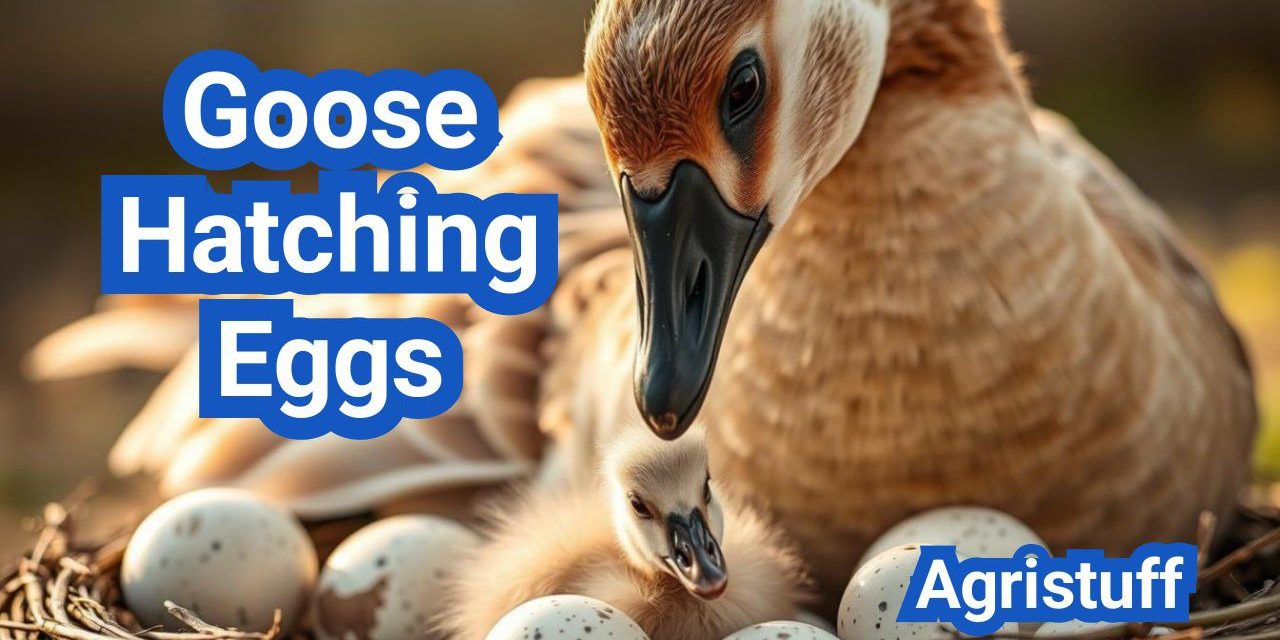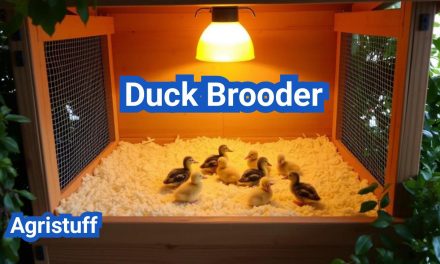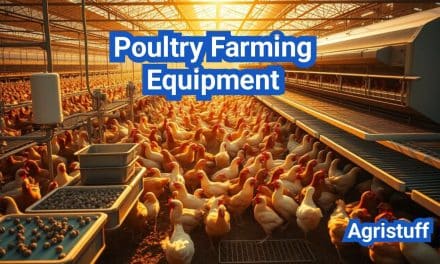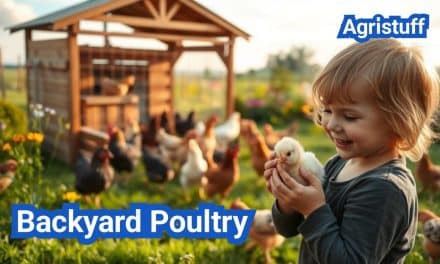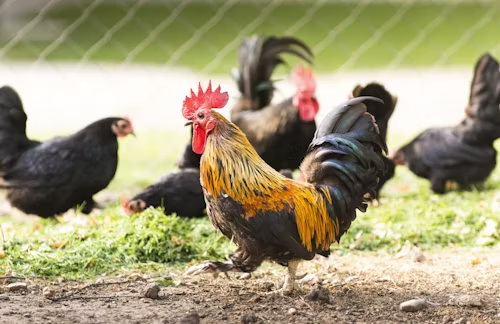Incubating goose hatching eggs requires careful handling and specific conditions to ensure successful hatching. Understanding the basics of incubation is crucial for anyone looking to hatch geese.
According to experts like Rachele Paulus from Tyrant Farms, the key to successful incubation lies in maintaining the right environment. This includes controlling temperature, humidity, and turning the eggs regularly.
Fertile goose eggs must be stored properly before incubation to maintain their viability. Proper handling and storage techniques are vital for maximizing the chances of successful hatching.
Key Takeaways
- Proper handling and storage of hatching goose eggs is crucial.
- Maintaining the right temperature and humidity is key to successful incubation.
- Regular turning of the eggs is necessary to prevent developmental issues.
- Understanding the basics of incubation is vital for successful hatching.
- Using fertile eggs from a reputable source improves hatching success rates.
Understanding the Basics of Goose Hatching Eggs
To achieve a high success rate in goose hatching, it’s essential to grasp the basics of fertile eggs and incubation methods. The characteristics of fertile goose eggs play a crucial role in determining the success of the hatching process.
What Makes a Fertile Goose Egg
A fertile goose egg is the result of proper breeding between a healthy male and female goose. The fertility of the egg is influenced by factors such as the health and age of the parent geese, their nutrition, and the breeding practices employed.
Fertility Indicators: A fertile egg will have a germinal disc, which is visible upon candling. The size and shape of the egg can also indicate fertility, with eggs being more elongated and having a smooth, clean surface.
The Meaning Behind Goose Egg Hatching
Goose egg hatching is a complex process that involves the development of the embryo inside the egg, culminating in the gosling breaking out of the shell. This process is influenced by factors such as incubation temperature, humidity, and turning.
The incubation period for goose eggs typically ranges from 28 to 30 days, depending on the breed and incubation conditions.
Natural vs. Artificial Incubation Methods
There are two primary methods of incubating goose eggs: natural incubation by a broody goose and artificial incubation using an incubator.
| Incubation Method | Advantages | Disadvantages |
|---|---|---|
| Natural Incubation | Regulates temperature and humidity naturally, turns eggs naturally | Limited number of eggs, dependent on broody goose |
| Artificial Incubation | Allows for large-scale hatching, controlled environment | Requires precise control of temperature, humidity, and turning |
The choice between natural and artificial incubation depends on the scale of the operation and the resources available. Understanding the basics of both methods is crucial for successful goose egg hatching.
Popular Goose Breeds and Their Incubation Requirements

When it comes to goose breeding, understanding the specific incubation requirements of different breeds is crucial for success. Various goose breeds have been developed over the years, each with its unique characteristics and incubation needs.
Sebastopol Geese Hatching Eggs
Sebastopol geese are known for their distinctive curly feathers. Their eggs require careful handling during incubation due to their potentially fragile nature.
African and Chinese Geese Incubation
African and Chinese geese are popular breeds among farmers. Their eggs have similar incubation requirements, with a focus on maintaining optimal temperature and humidity levels.
American Buff and Embden Goose Eggs
American Buff and Embden geese are heavy breeds that produce large eggs. These eggs require specific incubation settings, including precise temperature control and adequate turning.
Egyptian and Canadian Geese Considerations
Egyptian and Canadian geese have different incubation requirements compared to domestic breeds. Understanding these differences is essential for successful hatching.
To better understand the incubation requirements of different goose breeds, let’s examine a comparison table:
| Breed | Incubation Period (days) | Optimal Temperature (°F) | Humidity Level (%) |
|---|---|---|---|
| Sebastopol | 30-32 | 99.5 | 60-65 |
| African | 28-30 | 99.5 | 60-65 |
| Chinese | 28-30 | 99.5 | 60-65 |
| American Buff | 30-32 | 99.5 | 65-70 |
| Embden | 30-32 | 99.5 | 65-70 |
Understanding the specific incubation requirements of different goose breeds is vital for successful hatching. By recognizing the unique needs of each breed, breeders can optimize their incubation processes.
Selecting and Sourcing Quality Goose Hatching Eggs
Selecting fertile goose eggs is the first crucial step in the incubation process. The quality of the eggs directly impacts the success rate of hatching healthy goslings. To ensure you’re getting the best eggs, it’s essential to understand what makes a fertile egg and where to source them.
Physical Characteristics of Healthy Fertile Eggs
Healthy fertile eggs have distinct physical characteristics that indicate their viability for hatching. When selecting goose hatching eggs, look for:
- Cleanliness: Eggs should be clean but not washed, as washing can remove the protective bloom.
- Shape: Eggs should be symmetrical and well-formed. Avoid eggs that are misshapen or have ridges.
- Size: While size can vary by breed, eggs should be of a consistent size for the breed you’re incubating.
- Shell Integrity: The shell should be strong and free of cracks. A slight texture or “orange peel” effect is normal for goose eggs.
Where to Buy Fertile Goose Eggs
Fertile goose eggs can be sourced from various suppliers, including local breeders, hatcheries, and online sellers. Metzer Farms is a well-known supplier that ships fertile eggs across the United States. When purchasing online, ensure the supplier has a good reputation and provides detailed information about the eggs, including breed, fertility rates, and handling instructions.
Price Considerations for Different Breeds
The price of fertile goose eggs can vary significantly based on the breed. Rare or heritage breeds tend to be more expensive than common breeds. Here’s a general price comparison based on data from various suppliers:
| Breed | Average Price per Egg |
|---|---|
| Sebastopol | $2.50 – $3.50 |
| African | $2.00 – $3.00 |
| Chinese | $1.80 – $2.80 |
| Embden | $2.20 – $3.20 |
Shipping and Handling Concerns
Shipping hatching eggs requires careful handling to prevent damage. Suppliers often use specialized packaging to protect the eggs during transit. When shipping fertile goose eggs, it’s crucial to:
- Choose a supplier that uses expedited shipping to minimize transit time.
- Ensure eggs are packaged with adequate cushioning to prevent breakage.
- Upon arrival, immediately store the eggs in a cool, humid environment until incubation.
By carefully selecting and sourcing quality goose hatching eggs, you significantly improve the chances of successful incubation and healthy gosling development.
Proper Storage Before Incubation

Proper storage of goose hatching eggs is a critical step that significantly influences the success of the incubation process. Before the eggs are placed in the incubator, their storage conditions can affect their viability and the health of the goslings. According to insights from Stephen Horst, a renowned expert in poultry incubation, the conditions under which hatching eggs are stored can make a significant difference in hatch rates.
Optimal Storage Temperature and Humidity
The storage temperature for goose hatching eggs should be between 50°F to 60°F (10°C to 15°C). This cool temperature slows down the development of the embryo, allowing for a brief storage period without significant loss of viability. Humidity levels should be maintained between 70% to 80% to prevent excessive moisture loss from the eggs.
Positioning and Handling During Storage
It’s recommended to store goose hatching eggs with the large end facing upwards. This positioning helps maintain the correct orientation of the embryo. Eggs should be handled carefully to avoid cracking or significant jolting, which can damage the embryo and reduce hatchability.
Maximum Storage Duration
The maximum duration for storing goose hatching eggs can vary, but generally, it’s advised not to exceed 7 to 10 days. The longer the storage, the lower the hatchability. Therefore, it’s crucial to incubate the eggs as soon as possible after collection.
Preparing Stored Eggs for Incubation
Before placing stored eggs in the incubator, they should be allowed to warm up to room temperature gradually. This helps prevent sudden changes that could stress the embryos. It’s also a good practice to clean the eggs gently if they are dirty, though this should be done carefully to avoid damaging the cuticle.
By following these guidelines for storing goose hatching eggs, breeders can improve the chances of successful incubation and healthy gosling development.
Choosing the Right Incubator for Goose Eggs
To maximize the chances of successful goose egg hatching, it’s essential to select an appropriate incubator. The incubator is a critical component in the incubation process, providing the necessary conditions for the development of the embryo.
Best Commercial Incubators for Goose Eggs
Commercial incubators are designed to provide optimal conditions for hatching eggs. According to John Metzer, a renowned expert in poultry incubation, “A good commercial incubator should maintain consistent temperature and humidity levels, crucial for the development of goose embryos.” Some top-rated commercial incubators for goose eggs include models with advanced features such as automatic turning and precise temperature control.
When selecting a commercial incubator, consider factors such as capacity, ease of use, and reliability. It’s also important to read reviews and consult with other breeders to find the best incubator for your needs.
Still Air vs. Forced Air Considerations
The choice between still air and forced air incubators depends on several factors, including the size of the incubation operation and the specific needs of the eggs being incubated. Still air incubators rely on natural convection to distribute heat, while forced air incubators use fans to circulate air, providing more uniform temperature distribution.
“Forced air incubators are generally recommended for goose eggs because they provide a more consistent environment,” notes an expert in poultry incubation.
DIY Goose Egg Incubator Options
For those on a budget or with a preference for DIY projects, creating a homemade incubator can be a viable option. DIY incubators can be made using materials such as Styrofoam coolers or wooden boxes, with temperature control achieved through the use of heat lamps or heating elements.
When building a DIY incubator, it’s crucial to ensure that it can maintain the necessary temperature and humidity levels. Precision is key to successful incubation.
Incubator Size and Capacity Requirements
The size and capacity of the incubator are critical factors to consider. The incubator should be large enough to hold the number of eggs you plan to incubate, with enough space for air to circulate around each egg.
When determining the required capacity, consider the size of the goose eggs and the number of eggs to be incubated. A general rule of thumb is to allow for ample space between eggs to ensure even air circulation.
Essential Goose Egg Incubator Settings

The right incubator settings are vital for the successful incubation of goose eggs. According to Rachele Paulus, a renowned expert in poultry incubation, precise control over temperature, humidity, and ventilation is crucial for ensuring the healthy development of embryos.
Temperature Requirements
Maintaining the correct temperature is critical for the incubation of goose eggs. The ideal temperature for incubating goose eggs is between 99.5°F (37.5°C) and 100°F (37.8°C). It’s essential to ensure that the temperature remains consistent throughout the incubation period.
Temperature fluctuations can lead to abnormal development or even embryo death. Therefore, it’s crucial to choose an incubator with reliable temperature control.
Humidity Levels Throughout Incubation
Humidity plays a significant role in the incubation process. The recommended humidity level for goose egg incubation is between 50% and 60% for the first 24 days. During the last three days (lockdown period), the humidity should be increased to 65% to 70%.
Proper humidity levels help prevent dehydration and promote healthy development.
Ventilation Considerations
Adequate ventilation is necessary to provide embryos with sufficient oxygen and to remove waste products. The incubator should have adjustable ventilation settings to accommodate the changing needs of the developing embryos.
Adjustments for Different Breeds
While the basic incubator settings remain the same for most goose breeds, some adjustments might be necessary depending on the specific breed and egg size. For example, larger eggs might require slightly different temperature and humidity settings.
It’s essential to research the specific needs of your goose breed to optimize incubator settings.
The Complete Turning Process for Goose Eggs

One of the most important aspects of incubating goose eggs is the turning process, which requires a thorough understanding of the techniques and schedules involved. Turning goose eggs is crucial for preventing the embryo from sticking to the shell membrane, thereby ensuring proper development.
Manual vs. Automatic Turning Methods
There are two primary methods for turning goose eggs: manual and automatic. Manual turning involves physically rotating the eggs by hand, typically multiple times a day. This method requires diligence and can be time-consuming but is effective for small batches of eggs. On the other hand, an automatic egg turner can simplify the process by mechanizing the turning, reducing labor, and increasing consistency.
According to insights from John Metzer, using an automatic egg turner can significantly improve the hatch rate by ensuring that eggs are turned at the correct frequency and angle, thus reducing the risk of human error.
Optimal Turning Schedule and Frequency
The optimal turning schedule for goose eggs typically involves turning the eggs at least 3 to 5 times a day. The frequency can be adjusted based on the incubation stage and the specific requirements of the goose breed being incubated.
A consistent turning schedule is vital to mimic the natural brooding behavior of a goose. The turning should be evenly spaced throughout the day to maintain the embryo’s proper development.
Proper Turning Techniques and Angles
When turning goose eggs, it’s essential to do so gently to avoid damaging the embryo. The eggs should be turned to an angle of about 45 degrees from the horizontal plane. This angle helps prevent the embryo from adhering to the shell membrane.
For manual turning, eggs should be marked on one side with a pencil to help track which eggs have been turned and to ensure that they are rotated in the correct direction.
When to Stop Turning Before Hatching
Turning should be stopped around day 25 of incubation for goose eggs, as the embryos prepare for hatching. At this stage, known as “lockdown,” the incubator’s environment is adjusted to prepare the eggs for hatching, and turning is ceased to allow the goslings to properly position themselves for emergence.
| Incubation Day | Turning Frequency | Additional Notes |
|---|---|---|
| 1-24 | 3-5 times/day | Maintain consistent turning schedule |
| 25 | Stop turning | Begin lockdown preparations |
By following the proper turning techniques and schedules, breeders can significantly improve the chances of successful hatching. Whether using manual or automatic methods, the key is consistency and gentleness to support the development of healthy goslings.
Cooling and Misting Techniques for Goose Eggs

To simulate natural brooding conditions, understanding cooling and misting techniques is essential for goose egg incubation. These processes are vital for replicating the conditions provided by a mother goose, ensuring the healthy development of the embryos.
Why Cooling Is Important for Development
Cooling goose eggs during incubation is a critical process that helps in simulating the natural conditions under which a mother goose would leave her nest. According to Rachele Paulus, a renowned expert in poultry incubation, cooling helps in preventing the embryos from overheating, which can lead to developmental issues. Proper cooling techniques can significantly improve hatch rates and the overall health of the goslings.
Proper Misting Techniques and Benefits
Misting is another crucial aspect of goose egg incubation. It involves lightly spraying the eggs with water to maintain the optimal humidity levels around them. Misting not only helps in keeping the eggs moist but also aids in simulating the natural humidity fluctuations that occur when a mother goose tends to her eggs. The frequency and amount of misting can vary depending on the stage of incubation and the specific requirements of the breed being incubated.
| Incubation Day | Misting Frequency | Cooling Duration |
|---|---|---|
| 1-7 | Once daily | 10 minutes |
| 8-14 | Twice daily | 15 minutes |
| 15-28 | Thrice daily | 20 minutes |
Cooling Schedule Throughout Incubation
Developing a cooling schedule is essential for the successful incubation of goose eggs. The schedule should be adjusted according to the incubation day, gradually increasing the frequency and duration of cooling as the embryos develop. A well-planned cooling schedule helps in reducing the risk of embryonic death and promotes healthy growth.
Simulating Natural Brooding Conditions
Simulating natural brooding conditions involves not just cooling and misting but also ensuring that the incubator environment closely mimics the conditions under which a mother goose would incubate her eggs. This includes maintaining optimal temperature, humidity, and turning schedules. By closely replicating these natural conditions, breeders can significantly improve the hatchability of goose eggs and the health of the resulting goslings.
Candling Goose Eggs for Development Monitoring

Candling goose eggs is an essential step in incubation, allowing breeders to assess the viability and development of the embryos. This technique involves shining a light through the egg to observe its contents.
When to Candle Goose Eggs
The ideal time to start candling goose eggs is around day 7-10 of incubation. This period allows for the detection of embryonic development and the identification of non-viable eggs.
What to Look for When Candling
When candling, look for signs of embryonic development, such as:
- Veins visible near the surface
- A dark spot or embryo
- Movement within the egg
Candling at Day 10: What You Should See
By day 10, a viable goose egg should display:
| Characteristic | Description |
|---|---|
| Embryo Size | Noticeably larger, potentially filling a significant portion of the egg |
| Vein Visibility | Veins should be more pronounced and visible near the surface |
| Movement | Possible to observe movement or a heartbeat |
Identifying Viable vs. Non-Viable Eggs
Viable eggs will show clear signs of development, such as an embryo and visible veins. Non-viable eggs may appear:
- Clear or empty
- Showing signs of contamination or rot
- No visible embryo or development
Removing non-viable eggs from the incubator helps prevent contamination and maintains a healthy environment for the remaining eggs.
Special Considerations for Hatching in Winter

Winter poses unique challenges for incubating goose eggs, requiring special care and adjustments. The cold weather can impact the incubation process, from maintaining the right temperature to ensuring the health of the newly hatched goslings.
Challenges of Geese Hatching Eggs in Winter
Hatching goose eggs in winter comes with several challenges, primarily related to maintaining optimal incubation conditions despite the cold external environment. One of the main issues is the increased risk of temperature fluctuations within the incubator.
Key Challenges:
- Maintaining consistent incubator temperature
- Managing humidity levels
- Preventing power outage disruptions
- Ensuring proper post-hatch care in cold conditions
Adjusting Incubator Settings for Cold Weather
To successfully incubate goose eggs in cold weather, it’s crucial to adjust the incubator settings appropriately. This includes setting the right temperature and humidity levels.
| Incubator Setting | Recommended Value |
|---|---|
| Temperature | 99.5°F (37.5°C) |
| Humidity | 50-60% |
Power Outage Preparations
Preparing for potential power outages is vital when incubating eggs in winter. This can involve having backup power sources or taking other measures to maintain incubator conditions.
Backup Power Options:
- Portable generators
- UPS (Uninterruptible Power Supply)
- Emergency power banks
Post-Hatch Care in Cold Conditions
After the eggs hatch, providing the right care for the goslings in cold conditions is essential. This includes maintaining a warm brooder and ensuring proper nutrition.
Brooder Temperature: Initially, the brooder should be set at around 90°F (32°C) for the first week, gradually decreasing the temperature as the goslings grow.
The Lockdown and Hatching Process

Understanding the nuances of the lockdown and hatching process can significantly improve the outcomes for goose egg incubation. As the incubation period nears its end, it’s essential to adjust strategies to ensure a successful hatch.
Initiating Lockdown
Lockdown is a critical phase that typically begins around day 25 of the incubation period for goose eggs. During this time, it’s crucial to stop turning the eggs to allow the embryos to move into the correct hatching position.
Preparation is key during lockdown. Ensure that the incubator is set to the correct temperature and humidity levels to support the hatching process.
Adjusting Humidity for Successful Hatching
Humidity plays a vital role during the hatching process. Increasing the humidity helps prevent the eggs from drying out and facilitates a smoother hatch.
According to insights from Rachele Paulus, maintaining the right humidity level is crucial for the health and viability of the hatchlings.
Duration of the Hatching Process
The hatching process for goose eggs typically takes between 24 to 48 hours after the onset of pipping. Patience is essential, as intervening too early can be detrimental to the goslings.
Monitoring the eggs closely during this period is vital to identify any potential issues early on.
When to Assist and When to Wait
Knowing when to assist during the hatching process and when to wait is a delicate balance. Generally, it’s advisable to let nature take its course unless there’s a clear indication that assistance is necessary.
Assistance should be considered if a gosling is having trouble hatching and is showing signs of distress. However, this should be done with caution and ideally under the guidance of an experienced breeder.
Brooding Newly Hatched Goslings

Brooding is a vital phase in the life of newly hatched goslings, demanding precise temperature control and hygiene. This critical period sets the foundation for the healthy growth and development of the goslings.
Brooder Setup and Temperature Requirements
Setting up a brooder for goslings involves creating a warm, safe, and healthy environment. The brooder should be equipped with a heat source, such as a heat lamp or a heating pad, to maintain an optimal temperature. According to experts at Tyrant Farms, the initial temperature should be around 90°F (32°C) for the first week, gradually decreasing by 5°F (2.8°C) each week until it reaches the ambient temperature.
Key Considerations for Brooder Setup:
- Use a secure, escape-proof enclosure.
- Provide adequate ventilation to prevent ammonia buildup from droppings.
- Bed the brooder with safe materials like straw or pine shavings.
First Feeding and Watering Protocols
The first feeding and watering of goslings are crucial for their health. Fresh water should be available immediately after hatching, and a starter feed that is nutrient-rich should be introduced within the first 24 hours. It’s essential to use a shallow, sturdy waterer to prevent drowning and ensure easy access to food and water.
Tip: Goslings need access to clean, fresh water at all times. Change the water frequently to prevent bacterial growth.
Early Care for Healthy Gosling Development
Early care plays a significant role in the healthy development of goslings. Monitoring their health, ensuring they have enough space to move, and providing a balanced diet are key factors. Regular checks for signs of illness or stress, such as lethargy or labored breathing, are also crucial.
| Age | Temperature (°F) | Feeding Recommendations |
|---|---|---|
| 0-7 days | 90 | Starter feed |
| 7-14 days | 85 | Continue starter feed, introduce greens |
| 14-21 days | 80 | Gradually introduce grower feed |
Transitioning from Brooder to Outdoor Living
As goslings grow, they need to be transitioned from the brooder to outdoor living conditions. This transition should be gradual, starting with short periods outdoors under close supervision, to acclimate them to outdoor temperatures and potential predators.
“The transition to outdoor living is a significant step in a gosling’s life. It requires careful planning to ensure their safety and continued healthy growth.” – Expert Advice from Tyrant Farms
By following these guidelines, you can ensure that your goslings have the best possible start in life, setting them up for healthy growth and development into strong, productive geese.
At The End of: Goose Hatching Eggs
Incubating goose hatching eggs requires careful attention to detail and a thorough understanding of the incubation process. By following the guidelines outlined in this article, you can significantly improve your chances of successful hatching.
Key factors include selecting high-quality goose hatching eggs, maintaining optimal incubator settings, and employing proper turning and cooling techniques. Understanding the specific needs of different goose breeds is also crucial for successful incubation.
By applying these incubation tips and being mindful of the unique requirements of your goose eggs, you can achieve a high hatch rate and healthy goslings. Whether you’re a seasoned breeder or new to goose incubation, careful planning and attention to detail are essential for a successful outcome.
FAQ
How long does it take to hatch goose eggs?
The incubation period for goose eggs typically ranges from 28 to 30 days, depending on the breed and incubation conditions.
What is the ideal temperature for incubating goose eggs?
The ideal temperature for incubating goose eggs is between 99°F and 100°F (37.2°C to 37.8°C).
What is the optimal humidity level for hatching goose eggs?
The optimal humidity level for hatching goose eggs is around 60% to 70% relative humidity.
How often should I turn goose eggs during incubation?
Goose eggs should be turned at least 3 to 5 times a day, with a recommended angle of 180 degrees to ensure even development.
Can I use a chicken egg incubator for goose eggs?
While some chicken egg incubators can be used for goose eggs, it’s essential to ensure the incubator is large enough and can maintain the required temperature and humidity levels.
How do I candle goose eggs to check for viability?
Candling involves shining a light through the egg to check for embryonic development, typically done around day 10 of incubation.
What are the signs of a viable goose egg during candling?
A viable goose egg will show a dark spot or ring with blood vessels, indicating embryonic development.
How do I care for newly hatched goslings?
Newly hatched goslings require a warm brooder (around 90°F to 95°F or 32°C to 35°C), adequate feeding, and access to water.
Can I hatch goose eggs without an incubator?
Yes, goose eggs can be hatched naturally under a broody goose or artificially using an incubator.
How do I store goose eggs before incubation?
Goose eggs should be stored in a cool, dry place (around 50°F to 60°F or 10°C to 15°C) with the large end up, and turned occasionally to prevent yolk sticking.
What are the benefits of cooling and misting goose eggs during incubation?
Cooling and misting goose eggs helps simulate natural brooding conditions, promoting healthy development and hatching.
How long can I store goose eggs before incubation?
Goose eggs can be stored for up to 7 to 10 days before incubation, but it’s recommended to incubate them as soon as possible for optimal hatch rates.
What are the challenges of hatching goose eggs in winter?
Hatching goose eggs in winter requires careful temperature control, humidity management, and preparation for potential power outages.
Conclusion of: Goose Hatching Eggs
Goose Hatching Eggs are a rewarding project for U.S. homesteaders, small farms, and classroom programs because Goose Hatching Eggs can produce hardy, personable goslings with excellent foraging instincts. Goose Hatching Eggs do demand a slightly different approach than chicken eggs—especially with humidity, turning, and the longer incubation window—so this guide walks you step-by-step through what works in real barns and backyards across the country.
For more on poultry incubation basics, see the University of Minnesota Extension’s guide.
Why Goose Hatching Eggs Need a Species-Specific Plan
Goose Hatching Eggs vary by breed in size, shell thickness, pore size, and incubation length, so Goose Hatching Eggs won’t thrive if you simply use a “chicken settings” chart. Goose Hatching Eggs from lighter breeds may pip earlier than heavier breeds, and Goose Hatching Eggs usually need more humidity management and careful ventilation to prevent weak hatches.
Learn about breed-specific incubation from the USDA’s Poultry Research Center.
Understanding the Incubation Window for Goose Hatching Eggs
Goose Hatching Eggs typically hatch between 28 and 35 days, with many Goose Hatching Eggs zipping close to day 30–32 depending on breed and conditions. Goose Hatching Eggs from heavy breeds may sit at the longer end of that range, so plan your monitoring and “lockdown” with the natural variability of Goose Hatching Eggs in mind.
Refer to Penn State Extension’s incubation timeline for detailed benchmarks.
Selecting the Right Goose Hatching Eggs
Goose Hatching Eggs should be clean, evenly shaped, and within a normal weight range for the flock so Goose Hatching Eggs produce vigorous goslings. Avoid Goose Hatching Eggs that are cracked, extremely small or oversized, or badly soiled; set Goose Hatching Eggs that are uniform so development tracks consistently across the batch.
The Poultry Science Association offers guidelines on egg selection.
Handling and Cleaning Goose Hatching Eggs Safely
Goose Hatching Eggs are best dry-cleaned with a soft cloth or very fine abrasive pad so Goose Hatching Eggs keep their protective cuticle intact. If you must spot-wash Goose Hatching Eggs, use water warmer than the egg and wipe—never soak—so Goose Hatching Eggs don’t pull bacteria through shell pores. Always let Goose Hatching Eggs dry fully before storage.
The FDA’s Egg Safety Rule outlines best practices.
How to Store Goose Hatching Eggs Before Setting
Goose Hatching Eggs should be stored cool and humid—roughly 55–60°F (13–16°C) and about 70–80% relative humidity—so Goose Hatching Eggs don’t start and stop embryonic development. Keep Goose Hatching Eggs large-end up in clean cartons and tilt daily if storage exceeds a week so Goose Hatching Eggs keep the yolk centered. Try to set Goose Hatching Eggs within 7–10 days for best hatch; beyond that, Goose Hatching Eggs lose viability each day.
Iowa State University’s research confirms optimal storage conditions.
Pre-Setting Prep for Goose Hatching Eggs
Goose Hatching Eggs deserve a calibrated, disinfected incubator that has been running 24 hours at target settings so Goose Hatching Eggs enter a stable environment. Sanitize trays, check your thermometer and hygrometer against a known-good reference, and verify your turner so Goose Hatching Eggs get even care from day one.
The CDC’s disinfection guidelines help prevent contamination.
Temperature Targets for Goose Hatching Eggs
Goose Hatching Eggs do best around 99–100°F (37.2–37.8°C) in a forced-air incubator, while still-air units run slightly hotter at the egg level so Goose Hatching Eggs reach the true internal target. Short dips below target are usually less harmful to Goose Hatching Eggs than overheating, so err on the cool side if you must choose while Goose Hatching Eggs warm up after setting.
University of Florida’s incubation study details temperature impacts.
Humidity Strategy for Goose Hatching Eggs
Goose Hatching Eggs benefit from a two-phase humidity plan: moderate humidity during the “set” phase so Goose Hatching Eggs lose the right amount of moisture, then higher humidity at hatch to prevent membranes from drying. A practical starting point for Goose Hatching Eggs is ~45–55% relative humidity during days 1–26 and ~65–80% during hatch (“lockdown”), with adjustments made by tracking weight loss so Goose Hatching Eggs finish around 13–15% lighter by internal pip.
USDA’s humidity research supports this approach.
Why Weighing Goose Hatching Eggs Works
Goose Hatching Eggs vary by shell and climate, so using a kitchen scale weekly is the most reliable way to tailor humidity for Goose Hatching Eggs. Record the starting weight and aim for a straight-line loss of ~13–15% by the due date; if Goose Hatching Eggs are losing moisture too slowly, lower humidity, and if Goose Hatching Eggs are losing too fast, raise humidity and reduce ventilation slightly.
Cornell University’s weight-loss study validates this method.
Turning Schedule for Goose Hatching Eggs
Goose Hatching Eggs must be turned frequently to prevent the embryo from sticking and to encourage proper membrane and vascular development, so plan at least 4–6 turns per day for Goose Hatching Eggs (hourly in auto-turners is ideal). Mark an “X” and “O” lightly in pencil on Goose Hatching Eggs so manual turning is consistent, and stop turning Goose Hatching Eggs 2–3 days before due date (around day 26–28) for a clean hatch.
The University of Kentucky Poultry Department provides detailed turning guidelines.
Positioning and Setting Angle for Goose Hatching Eggs
Goose Hatching Eggs set horizontally often hatch better than upright in some machines, and Goose Hatching Eggs benefit from a full 180° turn rather than 90° when turned by hand. Space Goose Hatching Eggs evenly so air flows uniformly, and always keep Goose Hatching Eggs with the air cell at the large end, even when laying flat.
Michigan State University Extension explains optimal egg positioning.
Cooling and Misting: When Goose Hatching Eggs May Need It
Goose Hatching Eggs naturally receive brief cooling when a broody goose leaves the nest, and some breeders mist Goose Hatching Eggs during mid-incubation to mimic that pattern. If your room is dry or your Goose Hatching Eggs are thick-shelled, a short daily cool (10–15 minutes) and a light lukewarm spritz after day 7 can help humidity management—yet many keepers hatch Goose Hatching Eggs well without it. Choose one approach and execute it consistently so Goose Hatching Eggs experience stable conditions.
The American Poultry Association discusses natural incubation behaviors.
Ventilation for Goose Hatching Eggs
Goose Hatching Eggs need oxygen and produce CO₂, so keep vents moderately open during set and open wider during hatch so Goose Hatching Eggs aren’t oxygen-limited. Avoid sealing small tabletop units; fresh air plus correct humidity is crucial so Goose Hatching Eggs don’t suffocate late in development.
Ohio State University’s Poultry Science covers ventilation requirements.
Candling Plan for Goose Hatching Eggs
Goose Hatching Eggs are easiest to candle around day 8–10, then again at day 15–18 so Goose Hatching Eggs can be culled if clear or dead. Expect to see a web of vessels and a distinct embryo by the first candling in Goose Hatching Eggs; by the second, Goose Hatching Eggs should show a larger dark mass and an expanding air cell. Remove obviously non-developing Goose Hatching Eggs to prevent rot and explosions.
The National Agricultural Library provides candling techniques.
Lockdown and Hatching for Goose Hatching Eggs
Goose Hatching Eggs go to “lockdown” 2–3 days before due date: stop turning, raise humidity toward ~70–80%, increase ventilation, and resist opening the machine so Goose Hatching Eggs don’t shrink-wrap. Pipping to zipping can take many hours for Goose Hatching Eggs; patience is key. Helping is risky, so intervene only if Goose Hatching Eggs are clearly stuck after an abnormally long interval and you’re skilled.
Virginia Cooperative Extension details lockdown procedures.
Troubleshooting Common Problems in Goose Hatching Eggs
Goose Hatching Eggs that hatch early often ran too warm; Goose Hatching Eggs that hatch late were likely cool or stored too long. “Sticky” or shrink-wrapped goslings mean humidity was too low late; mushy navels in Goose Hatching Eggs suggest humidity too high during set. Malpositions (head under wing, beak not in air cell) can result from inadequate turning of Goose Hatching Eggs, poor shape, or temperature swings.
Mississippi State University Extension offers troubleshooting charts.
Shipped Goose Hatching Eggs: Extra Care
Goose Hatching Eggs shipped through the mail can suffer detached air cells and internal damage, so rest Goose Hatching Eggs upright, large end up, for 12–24 hours before setting. Consider a “no-turn” first 24 hours for Goose Hatching Eggs with wobbly air cells, then resume a normal schedule so Goose Hatching Eggs re-stabilize.
The USPS Live Animal Shipping Guidelines provide transport tips.
Power Outages and Goose Hatching Eggs
Goose Hatching Eggs can survive moderate interruptions better than you think: insulate the incubator, avoid peeking, and keep Goose Hatching Eggs warm with safe supplemental heat if needed. After power returns, continue incubation and candle a few days later to confirm development in Goose Hatching Eggs.
FEMA’s Emergency Preparedness guides power outage management.
Sanitation and Biosecurity for Goose Hatching Eggs
Goose Hatching Eggs depend on a clean incubator: wash and disinfect cabinets, trays, and water pans between hatches so Goose Hatching Eggs aren’t exposed to pathogens. Handle Goose Hatching Eggs with clean, dry hands, and keep the incubation area separate from adult birds so Goose Hatching Eggs avoid cross-contamination.
CDC’s Biosecurity Recommendations apply to hatching eggs.
Aftercare: Brooding Goslings from Goose Hatching Eggs
Goose Hatching Eggs culminate in goslings that need warmth, water, and safe footing; start brooder temperature around 86–90°F (≈30–32°C) and reduce gradually each week. Provide non-slip bedding and a shallow waterer so goslings from Goose Hatching Eggs stay hydrated without soaking themselves.
Oregon State University’s Brooding Guide covers gosling care.
Practical U.S. Timing Tips for Goose Hatching Eggs
Goose Hatching Eggs are most available late winter through spring; plan backward 4–5 weeks from your desired hatch date so Goose Hatching Eggs align with pasture growth and outdoor temperatures. In northern states, aim for Goose Hatching Eggs that hatch after the last hard freeze; in milder regions, Goose Hatching Eggs can be set earlier to take advantage of spring grass.
USDA’s Planting Zones Map helps time hatches.
Quick Checklist for Dialing-In Goose Hatching Eggs
Goose Hatching Eggs succeed when you:
• Collect and store Goose Hatching Eggs at 55–60°F and 70–80% RH.
• Pre-run the incubator for Goose Hatching Eggs at ~99–100°F, verify instruments, sanitize.
• Turn Goose Hatching Eggs 4–6× daily until day 26–28.
• Track weight loss so Goose Hatching Eggs finish 13–15% lighter by pip.
• Increase hatch humidity for Goose Hatching Eggs and open vents near pip.
• Candle Goose Hatching Eggs at days ~8–10 and ~15–18 and remove clears.
• Be patient as Goose Hatching Eggs pip, rest, and zip over many hours.
Penn State Extension’s Checklist summarizes key steps.
Final Thought
Goose Hatching Eggs aren’t “hard”—they’re simply different. When you manage humidity by weight loss, turn on schedule, and respect the longer timeline, Goose Hatching Eggs reward you with sturdy, curious goslings and a high-confidence skill you can repeat season after season.
Sustainable Agriculture Research & Education offers long-term poultry keeping resources.

